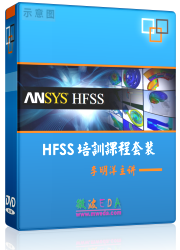Technical Notes
Radiated Fields
When HFSS calculates radiation fields, the values of the fields over the radiation surface are used to compute the fields in the space surrounding the device. This space is typically split into two regions — the near-field region and the far-field region. The near-field region is the region closest to the source. In general, the electric field E(x,y,z) external to the region bounded by a closed surface may be written as
|

|
(1) |
where
• s
![]() represents the radiation
boundary surfaces.
represents the radiation
boundary surfaces.
• j
![]() is the imaginary
unit,
is the imaginary
unit,![]() .
.
• w
![]() is the angular frequency,
2pf.
is the angular frequency,
2pf.
• m0
![]() is the relative
permeability of the free space, 4p´10-7
Wb/Am.
is the relative
permeability of the free space, 4p´10-7
Wb/Am.
• Htan
![]() is the component
of the magnetic field that is tangential to the surface.
is the component
of the magnetic field that is tangential to the surface.
• Enormal
![]() is the component
of the electric field that is normal to the surface.
is the component
of the electric field that is normal to the surface.
• Etan
![]() is the component
of the electric field that is tangential to the surface.
is the component
of the electric field that is tangential to the surface.
• G
![]() is the free space
Green’s function, given by
is the free space
Green’s function, given by
|
|
(2) |
• k![]() 0
0
![]() is the free space
wave number,
is the free space
wave number,![]()
• r
![]() and
and ![]() represent
field points and source points on the surface, respectively.
represent
field points and source points on the surface, respectively.
• e0
![]() is the permittivity
of free space, 1/(c2m0)
is the permittivity
of free space, 1/(c2m0)
• er
![]() is the relative
permittivity of a dielectric.
is the relative
permittivity of a dielectric.
• mr
![]() is the relative
permeability of a dielectric.
is the relative
permeability of a dielectric.
This r dependence is characteristic of a spherical wave, a key feature of far fields. The far field is a spherical TEM wave with the following equation:
|

|
(3) |
where h0
is the intrinsic impedance of free space,  .
.
You can select the material in which the objects are embedded (the default is vacuum). In that case, the Green's function and the intrinsic impedance of that material will be used, so the far field will be correct. See Global Material Environment.
When calculating the near fields, HFSS uses the general expressions given in (Assigning Boundaries
Assigning Excitations
Spherical Cross-Sections
Maximum Near Field Data
Selecting a Far Field Quantity to Plot
-

国内最全面的HFSS培训课程,包含7套视频教程和2本教材,资深专家讲解,视频操作演示,结合最新工程案例,让HFSS学习不再难...【详细介绍】






